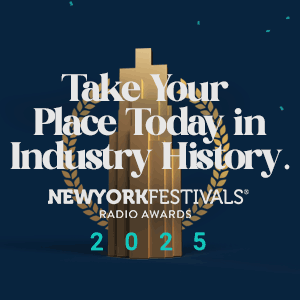 One of the major trends shaping consumer behaviour today is that, while the desire for status hasn’t gone away and we still seek social currency, we now seek it through experiences, stories, and moments we can share.
One of the major trends shaping consumer behaviour today is that, while the desire for status hasn’t gone away and we still seek social currency, we now seek it through experiences, stories, and moments we can share.
Put another way, rather than buying ‘stuff’ or things, we’re buying into things. Are they now redundant or do they have a new role to play?
To find out, Added Value invested in a five phase study it called Creating Cultural Value. This saw it talking in-depth to 30 iconic brand leaders in the UK, US and Europe (in association with the MRS); running a panel with creative directors (through D&AD); applying expert semiotic analysis to social channels to identify the cultural orbits brands are playing in and finally speaking to some smaller brand players who are storming ahead when it comes to shifting culture.
Here’s what we found:
·The role of brands is changing
Thoughts are becoming more important than things. We’re defined by what we think, the passions we have, the causes we champion, the communities we’re part of – not the things that we buy. People are more sophisticated than ever and have a conscious and quite transactional approach to where they channel their attention, so if a brand wants to be noticed it has to earn the right to be noticed.
Functional difference is either dead or an opportunity for disruption.
For FMCG businesses, it is harder and harder to stand out with a functional difference – to be whiter than white, or make a razor with yet another blade.
But for some of the big tech companies functional disruption is something they are born out of, their functional difference is a completely different business model. They see an opportunity to take something that is functional and make it a feature by also making it beautiful or meaningful. But one thing everyone is agreed on is that as the world moves faster and faster it is getting harder to retain a functional difference. The barriers to entry are lower and the speed with which competitors catch up is faster.
Overall, we saw a picture emerge of a world in which people don’t care about brands. A world in which brands have realised the importance of championing something people really do care about.
·The challenges top of mind for brand leaders today
It’s getting harder to stand out in the world. To be distinctive and differentiated in a crowded space, seamlessly between touchpoints. 54% of people we asked saw this as a big challenge for their business. And only 24% felt like they were successfully tackling this challenge.
Being more human was highlighted to be a challenge by 50% of people we asked. Brands try to engage with audiences authentically and in a way that adds value. It’s too easy to overestimate the role a product or service plays in people’s lives and so businesses are trying to engage beyond the core product or service to be meaningful and relevant to people. But only 33% of people felt like they were successfully doing this.
Operating in hyper real time was the third biggest challenge marketers were experiencing. This is about responding in real time but also across fragmented platforms, not just quicker but broader.
Start-ups are agile and able to better achieve this. Big brands can’t compare with their ability to try and fail. The race to get from insight to action is increasingly important. 58% of people found this to be a top challenge and only 19% felt like they were achieving it.
It became clear however that having a cultural role was believed to help address today’s top challenges. 65% believed that being better connected to culture and having a cultural role would make them better at addressing the challenge to stand out in the world. 77% thought that having a cultural role would help them be more human, and 73% felt the same about operating in hyper real time.
Interestingly, 83% of the people we spoke to felt that connecting with culture was a clear way in which they could help their brand grow.
But what do we really mean by a brand that connects with culture?
In the beginning there was commercial value. Pretty soon people started offsetting this with social value run by the CSR department. They had a different set of priorities, a separate budget, and were run by different types of people. The social good wasn’t sitting at the heart of the brand so wasn’t authentically activating the brand purpose.
What we’re seeing now is a move to ‘cultural value’, the need to deliver something meaningful, valuable and useful to the very people your brand serves. It’s on everyone’s agenda and to grow a brand you need to tick all three boxes at once.
We saw that some of the brands that do this best are asking themselves these questions:
·What are we doing to make life easier or better for the people we serve?
·What do they really value above and beyond our products and services and how can we get them closer to those things?
·Where do we have a right to play, what capabilities and resources does our business have that can help us deliver things above and beyond just what we sell?
·How can we shape and shift culture, what’s the impact we want to have? How will we leave a ‘dent’ on the world?
Brands doing this well are brands like Starbucks. Starbucks are all about nurturing the human spirit, ‘one neighbour, one cup at a time’. They have set out to re-define what the idea of ‘neighbourhood’ means in the modern urban world as well as selling coffee.
Cosmetic brand Lush is another brand connecting with culture well. There can’t be many things more superficial than bath bombs but by pushing the moral and ethical agenda forward and taking a stand for some quite controversial issues Lush has established itself as a brand that is about much more than a smelly bath. Lush’s sales have doubled over the last 5 years so they are clearly doing something right.
How do businesses set themselves up to do this?
The organisations that are doing this successfully are clear on the role they want their brand to play in culture and the specific contribution they want to make. They create a brand experience that connects to culture in real time. And they’ve set up their organisation to be curious and connected to the outside world.
Sometimes, it’s about having identified a purpose that goes beyond your category. For example, Microsoft originally set out to put a PC on every desk, their focus now has shifted to empower people to do amazing things. This is about engaging in culture and bringing something authentic and positive to the overall experience. The product might be one of the things that enable Microsoft to do this but they are not limited to delivering this only through their products.
Often, it’s about being less ambitious – a lofty vision is all very well but it needs to be grounded in a tangible contribution that the business has decided to make to culture. Airbnb have turned the travel industry upside down with a unique perspective on what the experience of travel should really be about. Not only have they set out to obliterate cultural boundaries and create real human connections in the process but they also, on a much more practical level, empower people to use idle space for a productive cause.
One thing that brands performing well in this space all have in common is the value they place on internal communication and recruiting the right people to embrace the brand’s cultural role. Barclays, at a time of deep negative perception of banking, looked inside their organisation to build their purpose and activation of that purpose from the internal grassroots level. This led to Digital Eagles, initially an internal initiative to help build tech capability of those that felt like they were being left behind, that has now been rolled out into the community.
Finally, and probably most importantly it’s about what you do, not what you say. In the study, we saw three brand behaviours that culturally connected brands are great at.
·Form a community. A name on a cup may seem like a small thing but it was a personal gesture that Starbucks made to reinforce the community they build up around their brand. At the same time as putting names on cups they gave the servers the chance to write their names on their badges too, enhancing the personal interaction.
·Create and Curate Together. The Guinness Africa campaign that was developed in collaboration with local artists and influencers to celebrate a range of musicians, artists and entrepreneurs from different African countries who are each pushing the boundaries of their culture in their own way through personal expression, and making their mark.
·Have a Change Agenda. Patagonia seeking to change the way we consume in order to protect the environment by actively encouraging people to buy less and reutilise more.
Authored by Izzy Pugh, Head of Cultural Insight Added Value.


